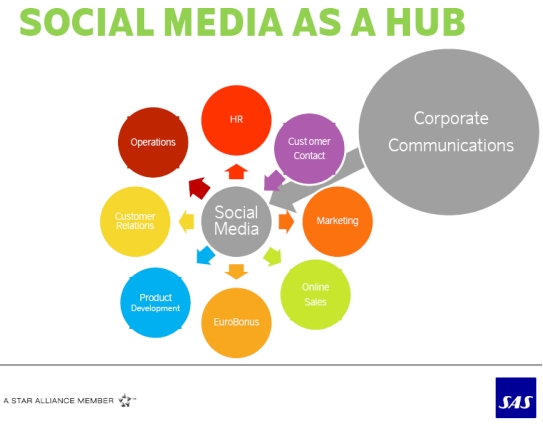Building a social media accepting culture
IN-DEPTH: Over the last couple of years, many travel brands have grown in their knowledge of how to better use social media to effectively communicate with their customers and prospects.
One of the main reasons behind such trend is that travel companies are diligently looking at organising internal teams to manage new media communication effectively.
By Ritesh Gupta
The best social media outreach usually engages multiple departments within an organisation.
Getting involvement across the different functions in your organisation is a best practice even if the primary communication responsibilities fall under one group.
One needs to encourage all departments to include social media initiatives in their planning and campaign development processes.
“Utilising this approach is a great way to encourage internal communication and education on social media best practices, opportunities for various departments to either participate or build social marketing into their planning processes and greater collaboration by all departments which have the opportunity to be a customer touch point,” says Jennifer Stafford, Social Media Manager, HomeAway.com.
According to Stafford, if one intends to build a culture where social media is an integrated function, then outreach to the internal departments showing them situations to become involved in conversations about the brand and products you sell or places where the company is missing opportunities to engage is a good trigger for most groups to become more involved.

Source: Scandinavian Airlines
“Another key to building a social media accepting culture is to identify how social media is helping to achieve business objectives through campaign metrics, finding real life examples of customer interaction and missed opportunities then distributing these items to relevant managers within your company will help to build the case for growing the social media programme,” shared Stafford.
Organising teams
According to Christian Kamhaug, head of Social Media at Scandinavian Airlines, it is critical to assess what do the customer want as companies go about organising internal teams to manage new media communication effectively.
Consumers want:
· Quick & informed answers
· Availability
· A friendly environment
· To be taken seriously
On what to look for in your social media team, Kamhaug referred to following characteristics:
· Wide knowledge-base
· An interest in & understanding of social media
· Wide internal network
· Can-do attitude
· Enthusiasm
· Commercial thinking
· Common sense
Further, Kamhaug recommended that a team should set a certain standard and live up to it.
· Set your standard for responses
· Publish it
· Live up to it
· Measure it
· Apologise when you fail
Stafford recommends that a travel company must prepare for a variety of situations.
Before you start engaging in social conversations plan out different scenarios based on your business and determine how to handle them if they do occur. If your brand has been participating in social media for a while, take a step back and assess your plans for dealing with a “social media crisis”.
“Take into account situations involving employees (what happens if an employee says something personal on a company account; what if a statement about a competitor is made without permission, etc), customers (what if a very negative customer service issue is posted online) and non-customers (what if a non-customer is talking about perceived benefits of a competitor versus your brand),” shared Stafford.
When you’ve come up with a list of things that in your company would constitute a situation where a defensive response is needed develop a set of responses for common issues and outline a notification and approval chain within your company so you’ll know who to contact if a situation outside those you’ve planned for occurs and who needs to approve the messaging for any one off responses.
Being able to react quickly is key so knowing who to go to if a situation arises is important. Also ensure that after you’ve responded that you monitor the conversation to determine if additional follow up is needed, recommended Stafford.

